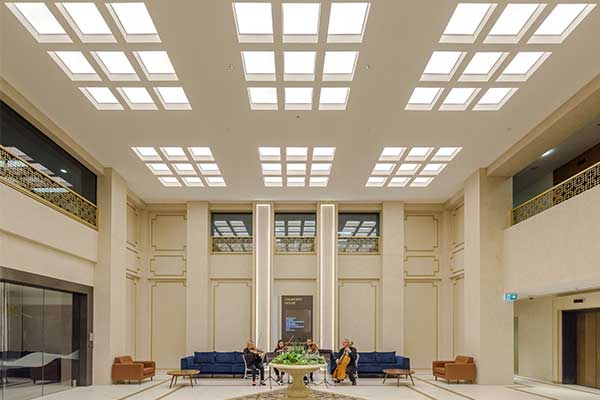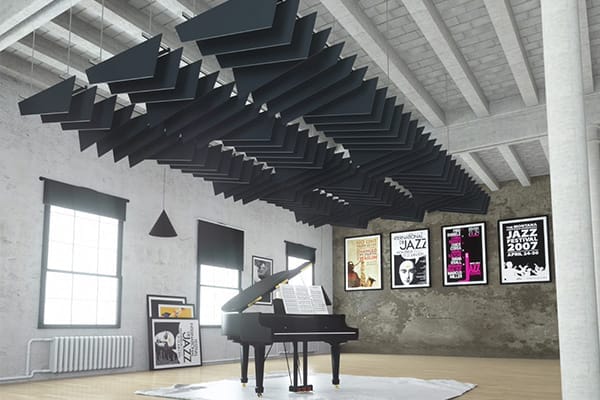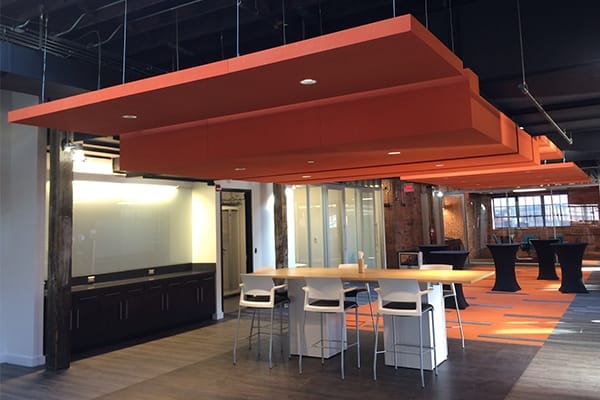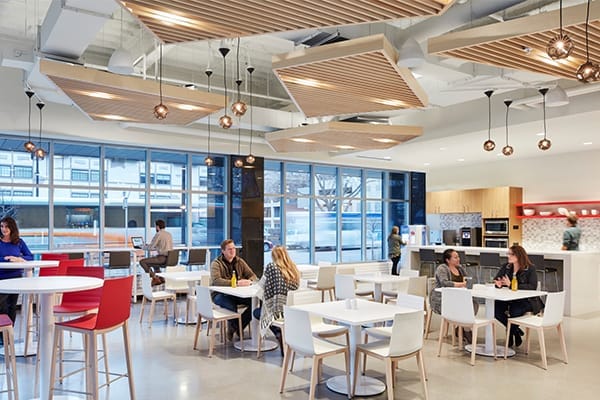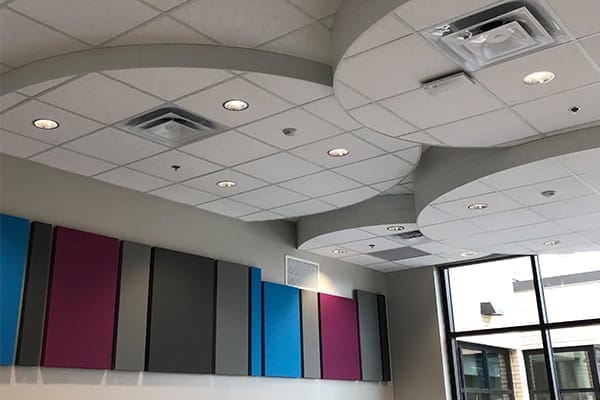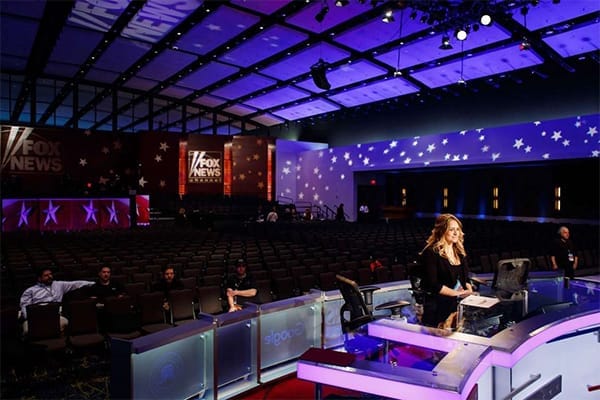Sound Consulting
The world is a noisy place. Have you ever been to a restaurant and struggled to hear the person next to you? Or work in an office space and constantly hear sound coming from other areas? We have focused on sound consulting since 1975. We leverage our strong product knowledge and industry expertise to solve acoustical challenges for our clients. From reverberation testing to online and on-site consultations, we are here to help.
Potential Applications
Acoustics is a branch of science that deals with vibration and sound. We can help assess, monitor and control noise levels. When our clients ask for our assistance, we help evaluate, design, manage and control sound and vibrations in the built environment.
Did you ever think that all of these spaces need careful sound design? Sound design makes them pleasant places to live, work, study and be entertained in.
- Houses of worship
- Restaurants
- Breweries and distilleries
- Concert halls
- Theatres
- Music performance venues
- Arenas
- Stadiums
- Gymnasiums and sports complexes
- Recording studios
- Music practice rooms
- Hospitals
- Schools and universities
- Residential buildings
- Offices
- Cinemas
- Restaurants
- Breweries and distilleries
- Concert halls
- Theatres
- Music performance venues
- Arenas
- Stadiums
- Recording studios
- Music practice rooms
- Hospitals
- Schools and universities
- Residential buildings
- Offices
- Cinemas
Key Concepts and Definitions
Noise Reduction Coefficient (NRC)
A single-number rating for comparing sound absorption of building materials, tested per ASTM C423. Products with a high NRC value absorb sound and help reduce reverberation.
Ceiling Attenuation Class (CAC)
A single-number rating for comparing sound attenuation of ceiling systems, tested per ASTM E1414. Products with a high CAC value help contain or block sound transmission between rooms with a common ceiling plenum. They inhibit unwanted noise from disrupting activities.
Sound Transmission Class (STC)
A single-number rating for comparing sound attenuation of partitions, such as walls or floor-ceiling assemblies, tested per ASTM E90. The higher the STC value, the greater the attenuation of airborne sound provided by the partition.
Sabins
A measure of the total sound absorption provided by an object or surface like acoustic ceiling tiles. Sound absorption performance of non-continuous sound absorbers, such as baffles, canopies, and clouds, are typically expressed in terms of sabins, tested per ASTM C423.
Reverberation
The persistence of sound in an enclosed space due to repeated reflections of sound waves. A common measure of reverberation is reverberation time, which is the time it takes, in seconds, for a sound to decay by 60dB in a space. Excessive reverberation can result in noisy environments with poor speech intelligibility.
Speech Intelligibility
A measure of comprehensibility of speech in a given set of room conditions. Speech intelligibility is influenced by a number of factors, including reverberation and background noise. Speech Transmission Index (STI) and Articulation Index (AI) are common measures of speech intelligibility.
Speech Privacy
The opposite of speech intelligibility, speech privacy is the inability to understand conversations by an outside listener. Speech privacy in enclosed spaces is primarily influenced by the sound transmission properties of the walls, floor, and ceiling construction, as well as background noise. Common measures of speech privacy include Speech Privacy Potential (SPP), Speech Privacy Class (SPC), and Privacy Index (PI).
Background Noise
Also known as ambient noise, background noise is any sound other than the primary sound being conveyed, such as speech. Background noise can reduce speech intelligibility or enhance speech privacy. Steady state background noise levels are often governed by HVAC systems and/or supplemented by sound masking systems. Background noise is often measured in A-weighted decibels (dBA), or stated in terms of Noise Criteria (NC) or Room Criteria (RC) values.
Key Concepts and Definitions
Noise Reduction Coefficient (NRC)
A single-number rating for comparing sound absorption of building materials, tested per ASTM C423. Products with a high NRC value absorb sound and help reduce reverberation.
Ceiling Attenuation Class (CAC)
A single-number rating for comparing sound attenuation of ceiling systems, tested per ASTM E1414. Products with a high CAC value help contain or block sound transmission between rooms with a common ceiling plenum. They inhibit unwanted noise from disrupting activities.
Sound Transmission Class (STC)
A single-number rating for comparing sound attenuation of partitions, such as walls or floor-ceiling assemblies, tested per ASTM E90. The higher the STC value, the greater the attenuation of airborne sound provided by the partition.
Sabins
A measure of the total sound absorption provided by an object or surface like acoustic ceiling tiles. Sound absorption performance of non-continuous sound absorbers, such as baffles, canopies, and clouds, are typically expressed in terms of sabins, tested per ASTM C423.
Reverberation
The persistence of sound in an enclosed space due to repeated reflections of sound waves. A common measure of reverberation is reverberation time, which is the time it takes, in seconds, for a sound to decay by 60dB in a space. Excessive reverberation can result in noisy environments with poor speech intelligibility.
Speech Intelligibility
A measure of comprehensibility of speech in a given set of room conditions. Speech intelligibility is influenced by a number of factors, including reverberation and background noise. Speech Transmission Index (STI) and Articulation Index (AI) are common measures of speech intelligibility.
Speech Privacy
The opposite of speech intelligibility, speech privacy is the inability to understand conversations by an outside listener. Speech privacy in enclosed spaces is primarily influenced by the sound transmission properties of the walls, floor, and ceiling construction, as well as background noise. Common measures of speech privacy include Speech Privacy Potential (SPP), Speech Privacy Class (SPC), and Privacy Index (PI).
Background Noise
Also known as ambient noise, background noise is any sound other than the primary sound being conveyed, such as speech. Background noise can reduce speech intelligibility or enhance speech privacy. Steady state background noise levels are often governed by HVAC systems and/or supplemented by sound masking systems. Background noise is often measured in A-weighted decibels (dBA), or stated in terms of Noise Criteria (NC) or Room Criteria (RC) values.
Not sure what you need?
Speak with one of our sound experts today.


